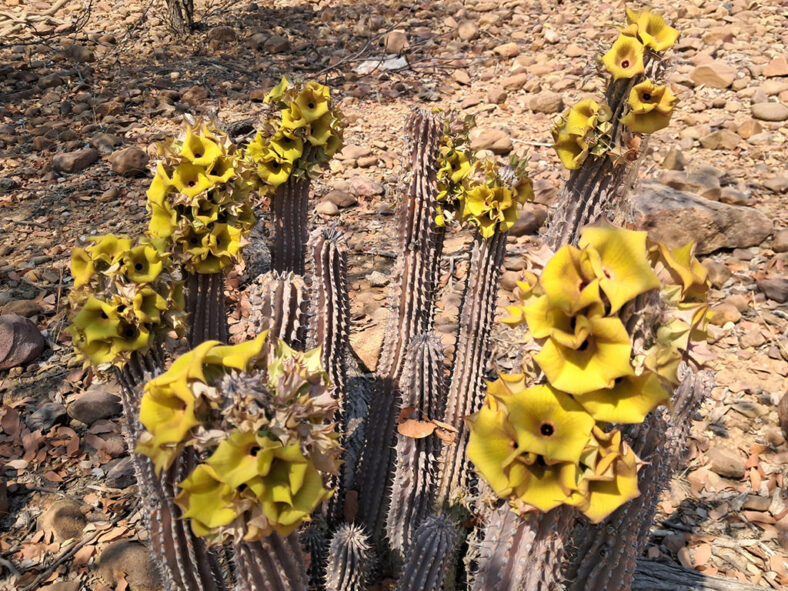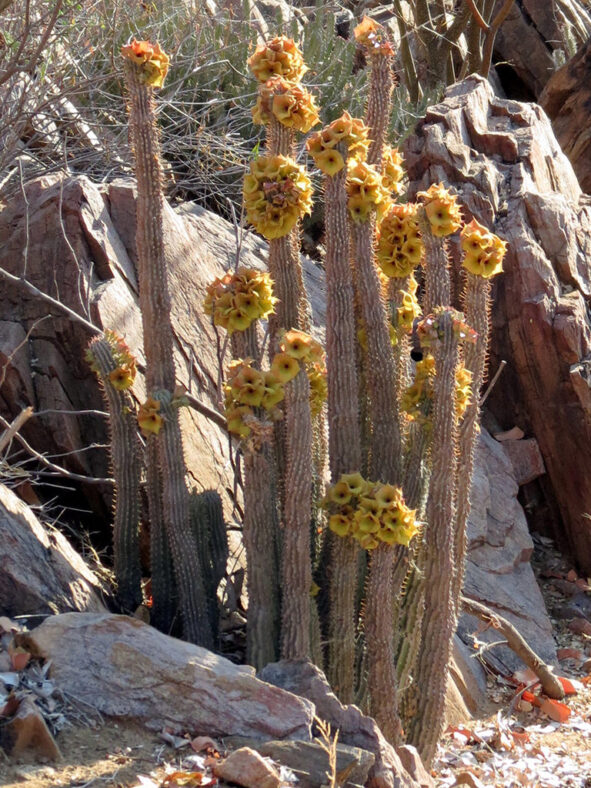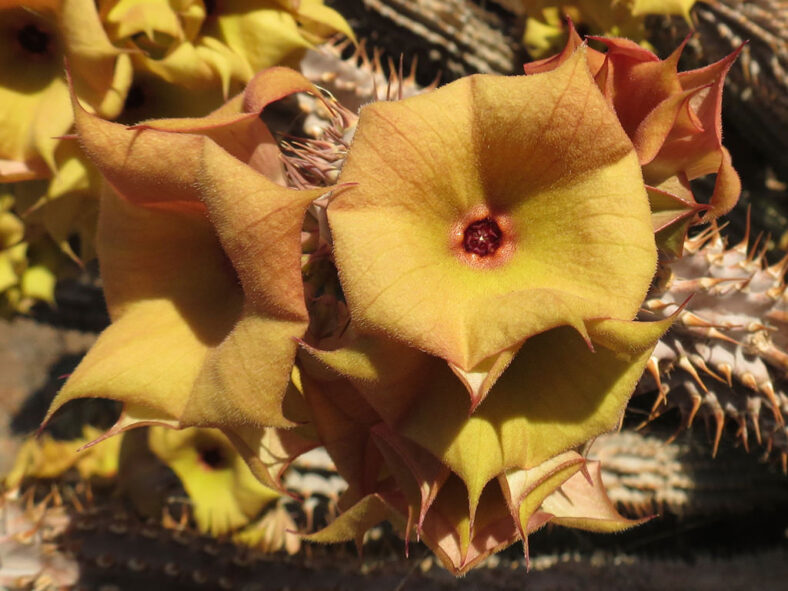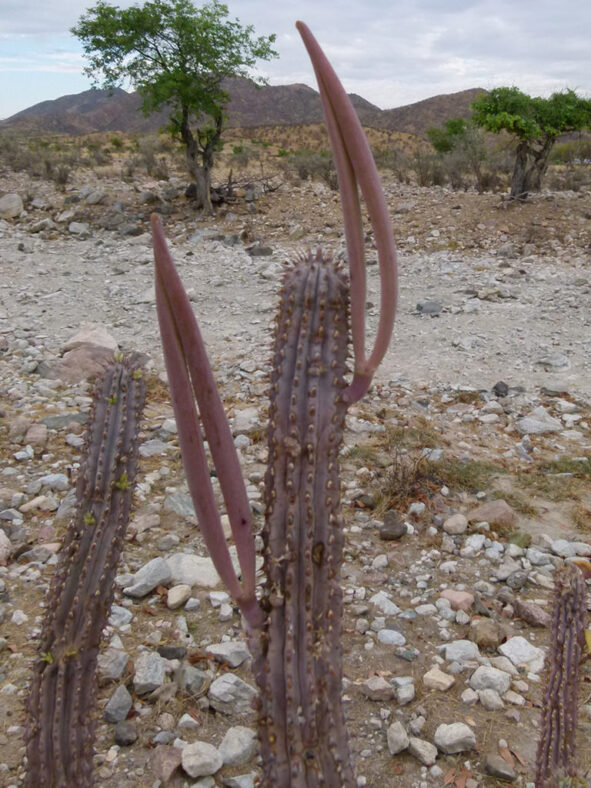Hoodia parviflora is the largest species of all stapelias. It is used commercially as an active ingredient in weight-loss foods and dietary supplements.
Scientific Name
Hoodia parviflora N.E.Br.
Synonym(s)
Ceropegia floriparva
Scientific Classification
Family: Apocynaceae
Subfamily: Asclepiadoideae
Tribe: Ceropegieae
Genus: Hoodia
Etymology
The specific epithet "parviflora" (pronounced "par-VEE-flor-uh") means "having small flowers" and refers to the size of the flowers of this species compared to the size of the plant.
Origin
Hoodia parviflora northwestern Namibia (restricted to the Kunene region) and the southwestern corner of Angola. It grows in dry places, often among elevated rocks.
Description
Hoodia parviflora is a large succulent shrub with cylindrical, upright stems with tubercles fused in the lower half into 11 to 24 ribs. The stems are gray-green, often brownish, and can grow up to 3 feet (1.8 m) tall. Each tubercle has a sharp spine at its tip.
During late winter and spring, Hoodia parviflora produces attractive flowers that are usually yellow but can also be yellow-orange or yellow-brown. The flowers are pentagonal or very slightly 5-lobed and typically appear in dense clusters near the top of the stems, with a diameter of up to 1.6 inches (4 cm). They are smooth on the outside and covered with short, soft hair on the inside. The fruits are pairs of pink, fusiform follicles.

How to Grow and Care for Hoodia parviflora
Light: Hoodia parviflora prefers full sun but will benefit from light shade during the hottest summer days. Indoors, place the plant near the brightest window of your home because it will stretch if it does not receive enough sunlight. Avoid abruptly moving a plant adapted to lower light levels to full sun to prevent sunburn.
Soil: Use commercial potting soil mix for succulents or prepare your own with 50% to 70% mineral grit, such as coarse sand, pumice, or perlite.
Temperature: The plant thrives in warm outdoor environments with low to moderate humidity. It does not like winter cold and should remain fairly dry and warm during its dormancy. Hoodia parviflora grows best in USDA Plant Hardiness Zones 10a to 11b, with average minimum winter temperatures ranging from 30 to 50 °F (-1.1 to 10 °C).
Watering: It has typical watering needs for a succulent. During the growing season, from spring to fall, water the plant thoroughly and allow the soil to dry between waterings. When it goes dormant in winter, it needs almost no water, about once a month.
Fertilizing: Fertilizing is beneficial to keep this plant healthy and thriving. Feed it with water-soluble fertilizer diluted to half the recommended strength, but only when the plant is actively growing.
Repotting: Repot Hoodia parviflora in spring, just before the growing season. It has shallow roots and does not require too much soil to grow. Always pick a container with drainage holes.
Propagation: The best way to propagate this succulent is by stem cuttings. To ensure good rooting, take cuttings during the growing season. The plant is also easy to start from seeds in spring.
Learn more at How to Grow and Care for Stapeliads.
Toxicity of Hoodia parviflora
Hoodia parviflora is non-toxic and safe to grow around kids and pets.
Links
- Back to genus Hoodia
- Succupedia: Browse succulents by Scientific Name, Common Name, Genus, Family, USDA Hardiness Zone, Origin, or cacti by Genus
Photo Gallery
Click on a photo to see a larger version.


